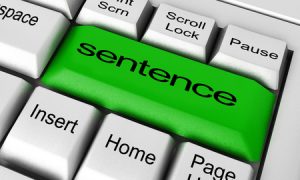
Key sentences define the structure of a case for support and ensure that every reader gets the same picture.
A crucial challenge in writing the case for support in a grant application is that the finished document will be discussed by a group of people who have read it at different levels. For example:-
- The referees will have read and analysed every last detail, in order to write a report for the grants committee.
- The presenters will have read it very carefully and will have created their own summary of it, which they will present orally to the committee.
- Most of the committee will only have read the summary but many of them will glance through the case for support when the committee are discussing it.
- Members of the committee who find the case for support interesting will also read it in detail.
If the discussion is to be fruitful, all these people should get exactly the same picture. Detailed reading of the case for support should produce exactly the same picture as riffling through it at high speed, which should produce the same picture as reading the first page and stopping when it gets boring, which should produce the same picture as reading the summary and ignoring the case for support completely. All these different ways of reading should produce the same picture. The only difference should be in the level of detail.
To solve this problem, you build the case for support from a skeleton of key sentences. In the full case for support, you flesh out each key statement with a few paragraphs of text to create a subsection. The key statement summarises the subsection that fleshes it out. In this way the case for support consists of a number of subsections, each of which begins with a key statement. If you string the key statements together on their own, without the subsections that flesh them out, you get the same story as the full case for support, but with less detail.
The full case for support fleshes out the key sentences with supporting detail, whereas the summary consists of the key sentences on their own. This ensures that people who read the full case for support get the same story as those who only read the summary. It also means that a reader who attempts to create their own summary from careful reading of the case for support is likely to create a very similar summary to the one you supply.
You can use the first sentences of paragraphs in the same way, to create a summary of a piece of text. This blog post has been written using the key sentence approach at the paragraph level. Each key statement is fleshed out with a few sentences to create a paragraph. You can see how the approach works by taking the first sentence from each paragraph in this section and stringing them together. It should make a good summary. Check the key sentence summary below to see how this works.
A second benefit of this assert-justify approach is that the key sentences act like signposts to tell the referees where to find the information they want. The referees will read the summary before they read the case for support and, as they read the summary, a series of questions and doubts will arise in their minds about whether the summary is backed up by detail. The key sentences in the body of the case for support will show them where to look for the detail.
In sum, the key sentence approach gives a summary that tells the same story as the extended version and makes it very easy for referees to find the information that they want. In the bullet points that follow you can see the summary of this blog post created simply by cutting and pasting the first sentence of every paragraph.
KEY SENTENCE SUMMARY
- A crucial challenge in writing the case for support is that the finished document will be discussed by a group of people who have read it at different levels.
- If the discussion is to be fruitful, all these people should get exactly the same picture.
- To solve this problem, the case for support is built from a skeleton of key sentences.
- The full case for support fleshes out the key sentences with supporting detail, whereas the summary consists of the key sentences on their own.
- You can use the first sentences of paragraphs in the same way, to create a summary of a piece of text.
- A second benefit of this assert-justify approach is that the key sentences act like signposts to tell the referees where to find the information they want.
- In sum, the key sentence approach gives a summary that tells the same story as the extended version and makes it very easy for referees to find the information they want.

